The experienced fisherman knows that there is more than one way to catch the different fish species in freshwater. In order to really master this, you need to know the habits of the fish you are hunting. This is due to the fact that every fish species has its preferred climate and habit all of which pose different fishing challenges.
A fish living in a clear pond is going to be much easier to catch than one who lives in a grassland habit or deep beneath the surface of the water. The attributes of each fish species also plays part in determining the method that you need to use in order to catch them.
If every fish weighed the same, looked the same, and had the same behaviors, fishing sure wouldn’t be a whole lot of fun and thanks to these differences in attributes, the fishing enthusiasts of the world are able to explore new ways of catching them virtually every time they step into the water.
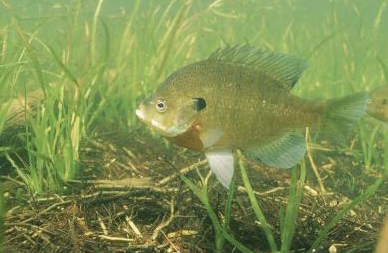
There are thousands of different species in the water and unless you’re a seasoned fisherman you probably don’t know about. Bluegill fish is one of those unique species, the species is a rather small one that has distinct characteristics which make them easy to spot against other fish. They are known to habitat several different large bodies of water throughout the world making them relatively easy to catch. The main identifying trait of Bluegill fish is their long pectoral fin that if folded should extend past its eyes.
Bluegills have a very long mating season which typically runs from late spring to early fall which means that you’ll have an optimal amount of time to catch them. Female bluegills have been researched and found to have the ability to spawn up to 9 times per year. The location in which you’ll find bluegills that have spawned typically have a solid bottom such as rocks or sand beds.
They are also known to build their nests about 1-4 feet deep in the water however in clear water they have been known to nest as deep as 10 to 15 feet. If you’re someone who has been interested in bluegill fishing but haven’t been able to find a comprehensive research guide to help you get started, you’ve come to the right place.
In this guide, we’re going to explore all of the most important information and factors that you need to know when approaching bluegill fishing. To begin, let’s take a look at all of the various techniques that you can use to catch bluegill so that you can select the one that will yield optimal results for your efforts.
Bluegill Fishing Techniques
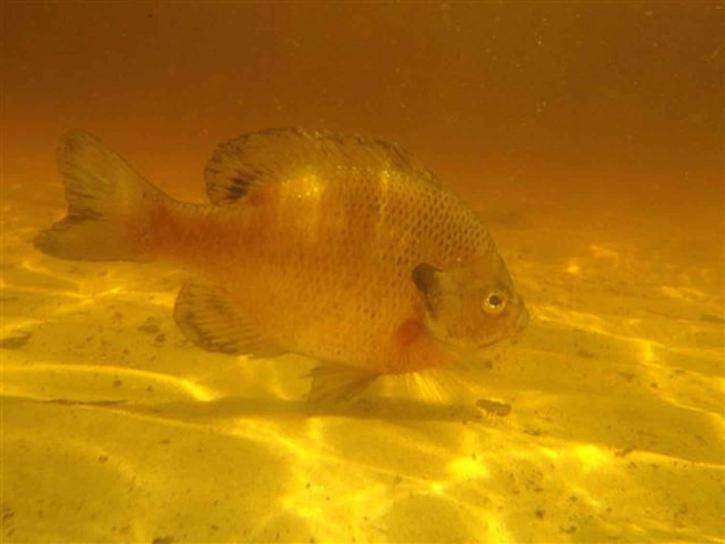
Bluegill is known to engage virtually any animal or object that comes near its spawning site. Because of this, they are relatively easy to catch however the method that you use to reel them in can vary depending on your experience level and how much time you have on your hands. There are 4 primary fishing methods you can implement into your next bluegill trip to make sure that you bring home the bacon!
Below, we’re going to cover all of them in detail so that you can make an independent decision about which one may be most efficient for you.
Bottom Fishing
This method involves casting your bait and allowing it to sink to the bottom of whatever body of water you’re fishing in. When using this fishing method, you want to make sure that you use as little weight as possible which allow the bait to sink slowly which doesn’t provide much resistance for the bluegill when they take your bait.
For using the bottom fishing method, you will want to make sure that you utilize a lightweight rod and line combination this will allow you to cast your bait without too much weight. The fish will likely begin to bite your bait as it is sinking, if you don’t get a bite within a few minutes, you might want to switch your location. This method is best for catching bluegill that is located in deep waters.
Bobber Fishing
This is probably one of the easiest methods to use for catching bluegill even for kids, to use this method you will need a small bait that hangs below a bobber cork. You want to use a small bobber that is just enough to float your bait. This setup will allow you to get optimal results, you typically want to set your bobber from 1 to 3 feet deep that’s if the fish are mainly concentrated at the top of the water.
For deeper waters you can set the bobber a bit deeper, slip bobbers are the best to use with this method because they are compatible with a wide range of different fishing depths.
Drift Fishing
Drift fishing is great for catching bluegill that is in open water, to use this method all you have to do is drift your bait across the water at a depth of about 10 to 15 feet which is usually great for catching bluegill fish. Bluegills are known to swim in pools so by using drift fishing where you see a lot of them gathered, you will yield a great pull.
Fly Fishing
Fly fishing is another great method that you can use to catch bluegill because it allows you to use bait that closely resembles their natural food in the wild which is small insects and bugs. All you need is an artificial bait fly and you will begin to see those gills flapping.
Now that we’ve gone over some of the different methods you can use to catch bluegill, it’s time to look at how you can determine the best time and location to fish for them.
Location & Time: When Can I Catch Bluegills?
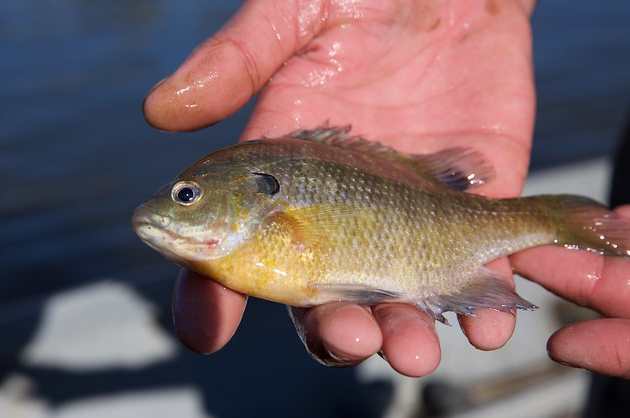
While the fishing method that you use is very important when it comes when catching bluegills, if you’re not in the right location it will ultimately be useless. Bluegills can spawn in various different locations depending on the time of year and season although oftentimes they can be found in similar locations. Below, we’re going to go over all of the most common places that you will find bluegills so that you will be able to optimize your fishing adventures.
Early Summer/Spring
Early summer and springtime are the primary spawning seasons for bluegill and is one of the most optimal times for you to catch them in abundance. To get even more specific, they can easily be found when the overall water temperature is somewhere around 70 degrees Fahrenheit so that is something you’ll want to keep in mind.
A great way to spot them during this time is by looking for newly formed rounded craters as they are an obvious sign of a bluegill spawning nest. By doing this, you will be able to find the location of these fish fairly easily and when you do, you’ll want to cast your line further than the nest and reel your bait right over the school.
Late Summer
Later summer maybe after the usual spawning season for bluegill however you can still find them in abundance located near deeper waters during this time. During the summer, bluegill can typically be found along the edges of weed beds and around large brush piles or even flooded timber.
These are some unique attributes that you can look for to determine the primary location of bluegill in your immediate fishing area. Bluegill tends to like deep water conditions during the summer months and tend to rest about 10 feet below the surface of the water. The best time to find them during this season will be either in the evening or early in the morning.
Fall
During the fall, you can pretty much find bluegill in the same locations as you did during late summer. One main difference about the fall time is that they usually gather in shallow waters so you may want to adjust your location if it’s really deep. During the fall the best time to fish for them is around midday because the water is a lot cooler.
Winter
In the winter, you can expect to find bluegill in very deep waters typically around 12 to 20 feet deep. They like to gather near underwater formations that are very close to the bottom. Due to the fact that bluegill doesn’t actively feed in the winter months, you’ll want to use very small bait and a slow presentation when casting your line in the water. Their bits are also very light during winter months so you want to make sure that you use a sensitive line and tackle or else you may not detect their bite on the line.
Now that we’ve covered some of the most popular times and locations that you can find bluegill, it’s time to look at our top recommended bait options when it comes to catching them.
Best Bait Options to Use for Catching Bluegill Fish
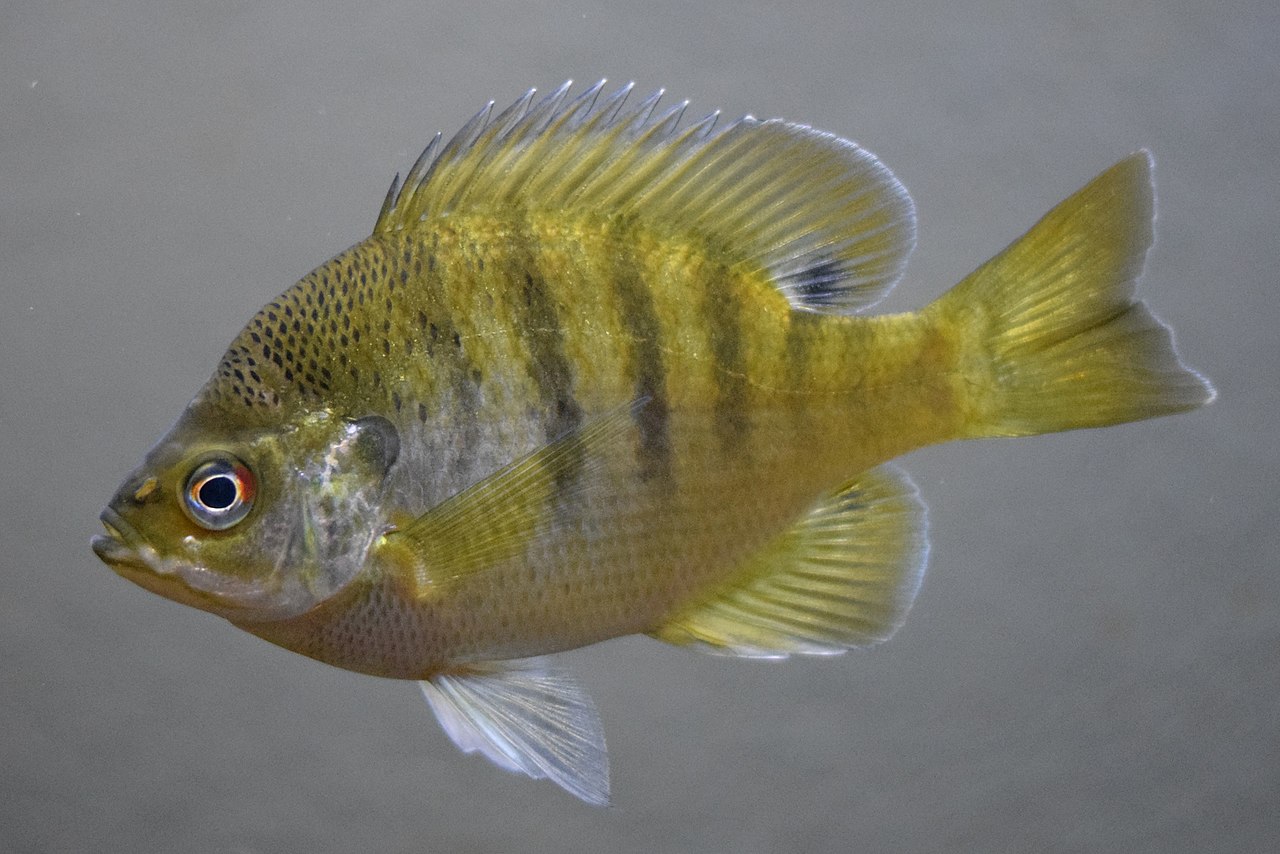
Catching bluegill doesn’t require much skill or effort however it’s important to make sure that you have the correct setup to make the process a lot smoother. That couldn’t be truer when talking about the type of bait that you use to catch them with, it’s extremely important to use the correct bait paired with the season and location because their spawning spot will vary drastically depending on the body of water, you’re fishing in.
In the following section, we’re going to explore all of the types of bait option that you can choose from when bluegill fishing to help you make the right decision about which one will provide you with the results you want.
Worm Bait
Worms are one of the most used bait types for catching bluegills because they are rather cheap and allow you to catch a lot of bluegills. There is no specific type of worm that is optimal for bluegill fishing which is great and nightcrawlers work great as bait too. Bluegills have mouths that are rather small so you only want to break off a portion of the worm for bait, not the entire thing.
Minnow Bait
Minnows work great for bluegill bait as long as they are smaller than 2 inches, larger minnow bait will not be compatible with bluegills that have small mouths. You want to hook the minnow through the lower or upper lip this will allow them to maintain their natural fishing pattern.
Tadpole Bait
Tadpoles are another great bait for both beginner and experienced anglers interested in catching bluegill. The best part is that you can catch them by the shoreline during the mid to early summer months. Avoid bullfrog tadpoles as they are too big you want to stick with smaller black tadpoles.
Snail Bait
Snails are a great natural bait option for bluegill because they are a sought-after prey for bluegill in the wild. They are easy to both handle and catch which is another great benefit, to use them, you should run your hook through the shell opening without damaging the shell itself. They are really abundant which means that you’ll have a nearly unlimited supply of bait for fishing.
Grasshopper Bait
Grasshoppers are one of the most popular food sources for bluegill and there is an abundance of them near tall grass that you can find in many farm ponds. While the fish prefer small grasshoppers, you can use virtually any size and still catch fish. To use them as bait, you should cast the bait into the shore about 2-3 feet deep which is where the fish will be waiting to see them naturally.
Sweet Corn Bait
Sweet corn kernels can be a very affordable and effective bait for bluegill fish, you can purchase a large quantity of it for about a dollar. One can of sweet corn will be enough to support constant baiting for multiple fishermen, to us it, hook one kernel to the end of your line and the smell of the corn will bring the fish into your immediate area.
Crayfish Bait
Small crayfish is really good for catching bluegills and they are great for those inexperienced anglers. Since their mouths are small, you will want to use rather a small crayfish to allow the fish to consume them easily. Try to find crayfish that have shed their protective skin shell as they are the most effective bait for Bluegill.
Creek Chub Bait
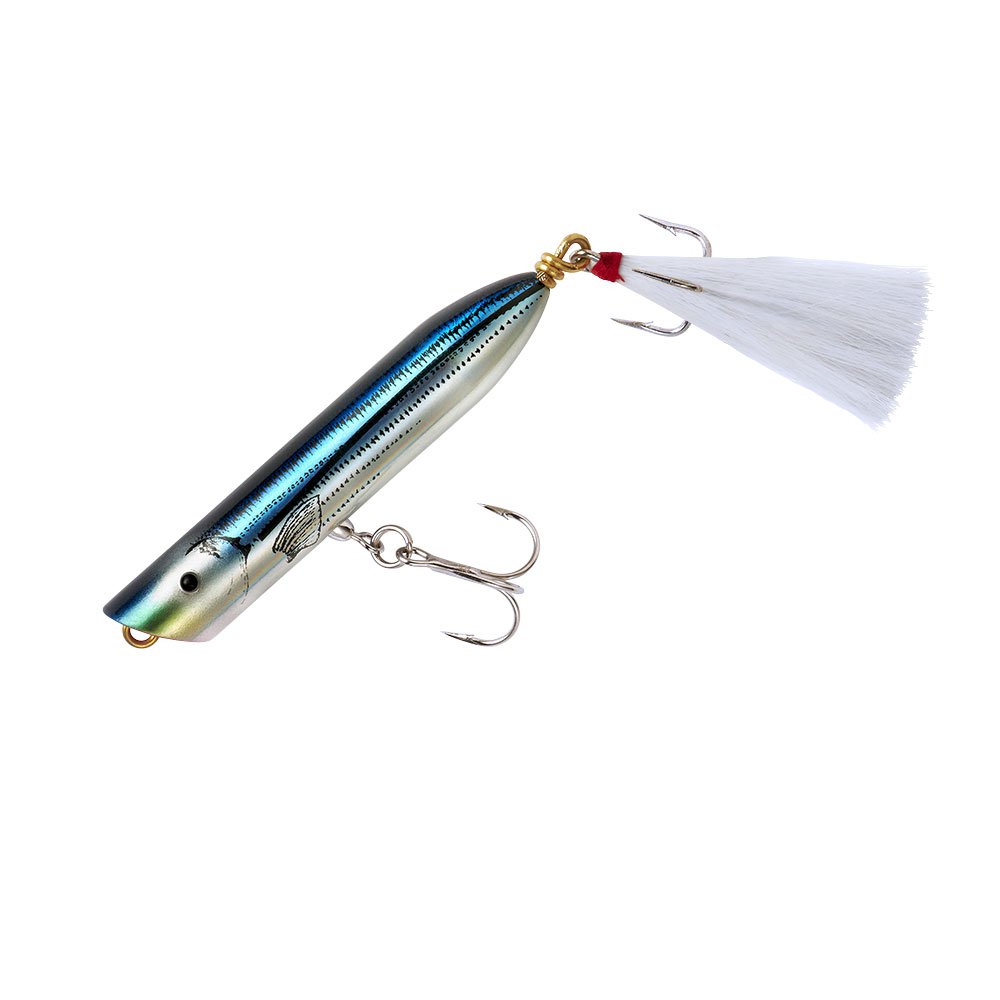
Creek chubs are also a very popular bait type for bluegills because they are readily available in lakes and streams around the country. They are also a really great option for beginner anglers interested in catching panfish of this particular species. Choose small creek chubs between 1-2 inches in total size because they will be the most edible for the fish.
Mealworm Bait
Mealworm bait is great for bluegills and you can find them at a lot of different bait shops. They are best for winter and summer fishing; all you have to do is hook the mealworm behind the head area in order to get the best yield.
Hot Dog Bait
While it may be surprising, it’s true that hot dogs work great for bluegill fishing as they are wonderful for beginner anglers. Try to use a rather small piece of a hot dog to ensure that the fish will be able to consume it properly.
Dead Minnow Bait
In some states, it’s illegal to use live minnow bait which is why dead minnows may be the right option for you. Check your local state laws to make sure, try to find salted minnows as the flavor and smell of them will draw the bluegills to you.
Now that we’ve gone over all of the various types of bait that you can use to catch bluegills, it’s time to look at the top 6 things that every angler needs to know before going out on the water.
Top 6 Bluegill Fishing Tips
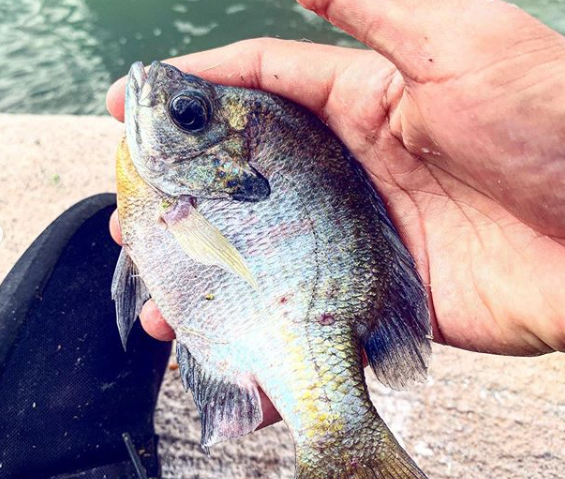
There are 6 things that you need to know before trying to catch bluegill which will help you make better use of your equipment and technique. If you’re serious about catching them, you’ll want to head all of the advice that we’re going to give in this following section to ensure that you make the most out of your next fishing trip.
Fishing License
While it may seem obvious, many people assume that if they fish in a private body of water or secluded area that exempts them from the need to be licensed in order to fish. To begin fishing for bluegill, you will need a certified and approved state fishing license from whatever state you reside. Fishing licenses come in different forms, you can purchase a license for 1 day of fishing or you can purchase one for an entire year.
Great Location
Regardless of where you decide to fish, you need to make sure that the body of water in the area is heavily populated with fish. This will be the best way to increase your odds of catching bluegill fish. There are a lot of different water bodies out there for you to select ranging from private farm ponds to public fishing lakes. Consider your area and the applicable laws so that you can choose the right body of water legally and safely.
Lightweight Equipment
Bluegills have very light bites so you want to make sure that you purchase a sensitive reel and rod combination. The recommended line capacity is somewhere around 2-6 pounds which are perfect for catching bluegill. Use small hooks also since this specific panfish species have really small mouths, this is the best setup to use when catching them. A lightweight rod and reel setup is inexpensive and very effective making it the perfect choice.
Quality Bait
You want to make sure that you use high-quality bait when fishing for bluegill, while they are relatively easy to catch the right bait will only increase the amount that swarms to your bait. We’ve already gone over all of the best bait types to use so read that section for more information in detail.
Patience & Perseverance
Like with all fish, bluegills come in waves all depending on the water conditions and location. While they generally tend to be very aggressive when some good bait is cast into the water, there can be points where they don’t bite as often. This is specifically for beginners, don’t get discouraged and have some patience as you will catch some eventually.
Enjoy Yourself
The last and most important thing to remember when bluegill fishing and fishing in general, is to have fun and enjoy yourself. While you may want to catch a ton of fish, its best to just really soak in the overall experience of being out on the water.
In the next section, we’re going to cover some of the key elements you need to consider when attempting to catch bluegill fish.
Factors to Consider: Bluegill Fishing
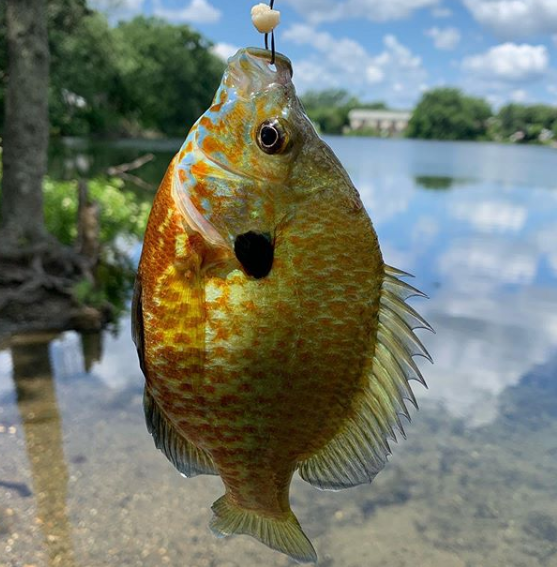
Knowing all of the intricate subtleties and undertones about bluegill will do nothing but help you catch more. That’s the reason the following section is dedicated to providing you with great information that can be practically applied to your bluegill fishing. You’ll want to make sure that you read this entire section in full to so that you can make the most out of your bluegill fishing adventures.
Find Shaded Areas on Sunny Days
When it’s sunny outside, Bluegill tends to search for the most shaded area in the water. This is because the water is darker in these areas which enhances the vision of the fish. It’s also a lot cooler in shaded areas which increases the amount of dissolved oxygen for the fish to consume. When you’re out on the water, try to find areas with the most shade in order to optimize your overall yield. Pretty much if you can find a shade you will be able to find a lot of bluegills.
Find Fish Cover
Bluegills love taking cover which allows them to set their positioning to catch more prey in addition to providing them with protection from surrounding predators. Because of this, you can find a lot of bluegill near water structures like beaver dams, timber, docks, and lily pads. If you find any of these structures in the water you’re fishing in, you will likely also find an abundance of bluegill nearby or directly in the area.
A great way to secure the fish on your line in these areas is by using live bait such as wax worms, small minnows, and nighthawks. Along with this bait, you’ll want to use a quality bobber because it will keep the bait stabilized in the strike zone for the fish.
Docks Are A Goldmine for Bluegill
Boat docks are an ideal location for catching bluegill and other types of panfish, the type of dock does not really matter either as fish are oftentimes drawn to them. When searching these areas, try to use some rigged live bait to cast underneath the docks in order to get the yield that you desire.
Spin casting
Given the light bite of bluegill fish, the optimal setup for catching them is typically a lightweight spin-cast rod or spinning reel combination. This combination will give you the ability to fish in close quarters environments and use light bait options from large distances without having to exert too much physical energy. If you decide to use a spin casting rod, you will need to use heavier bait at long distances for the setup to work correctly.
These types of rods are also very durable which allows you to easily reel in bluegills without having to worry about breaking your rod. Lightweight rods are also optimal for beginner anglers interested in catching this unique fish species.
Bobbers
To avoid gut-hooking the fish, you should use a bobber which will allow you to pick up on a potential bite early on. This will also give you the ability to get great hook sets in which you’ll need to reel the bluegill in, bobbers will also prevent your bait from hitting the ground which increases the odds of your bait being eaten.
The type of bobber doesn’t really matter as much as you correctly set it up. All of this is done because bluegills tend to have small mouths so using a bobber will allow you to fish for them without worrying about losing the fish because you didn’t feel the bite.
Small Hooks
To piggyback on what we just stated, these fish have small mouths so you need to use a small hook if you plan on reeling in a good harvest. The optimal hook size is about 4-8 which is the perfect range for catching bluegill fish without them taking your bait while evading the hook. Smaller hooks will also allow you to get more structured and firm hook sets in the fish, as long as you focus on using small hooks that are sharp, you should have no problem reeling in a tone of bluegills.
Live Bait
While there are many different bait options for you to choose from, the best selection for catching bluegill is always live bait. If you want to get consistent bites on your line, you need to use live bait. Artificial lures can work for catching bluegill however they themselves are even enhanced when used in combination with live bait. You can add the live bait to a round bobber or small stick for even more abilities to catch them.
Now that we’ve gone over some of the most important tips and information to consider when bluegill fishing, let’s look at the best time that you should fish for them.
What is the best time to fish for bluegill?

Bluegill aggressively feeds in a wide range of different seasons however their main times is the early summer. During this time, they can be found in shaded areas during the midday time, they can also be found actively feeding during the early fall in very deep water about 8-15 feet deep. In the later summer, they feed most actively while the sun is setting and throughout all of this time you will still want to ensure that you’re using live bait with small hooks.
The next section is going to be dedicated to providing you with all of the answers you need about some of the most commonly asked questions when it comes to bluegills.
FAQs
As a beginner or just someone who wants to learn more about bluegill, you might have a lot of different questions. To help make your experience more enjoyable, we’re going to answer some of the most frequently asked questions that people have when it comes to catching bluegill.
Q: What size bait should I use?
A: You should always use small live bait when fishing for bluegill because they do not have very large mouths to feed with. Worms, minnows, and corn are perfect for catching bluegill in virtually any season.
Q: How heavy do bluegills bite?
A: While there are some rather large bluegills, most of them are very small and tiny which is why you want to use a lightweight line. They tend to have a very light bite which means that if you use a heavy rod configuration, you may not feel them on your line causing you to lose the catch.
Q: Should I keep all the ones I catch?
A: No, you should always throw back at least 2 for every 5 bluegills that you catch as a way to preserve the water and natural ecosystem.
Now, it’s time to look at some of our top recommended fishing rod and reel selections for bluegill fishing.
Top Bluegill Fishing Rod Recommendations
We’ve covered everything that there is for you to know about bluegill fishing and how you should approach catching them, now it’s time to look at some of our top recommended fishing rods and reels for Bluegill fishing. Keep in mind, all of these recommendations will vary in terms of their overall weight, sensitivity, and configuration so you will want to consider your personal needs before making your final purchase decision.
1. Fenwick Elite Tech River Runner Spinning Rod
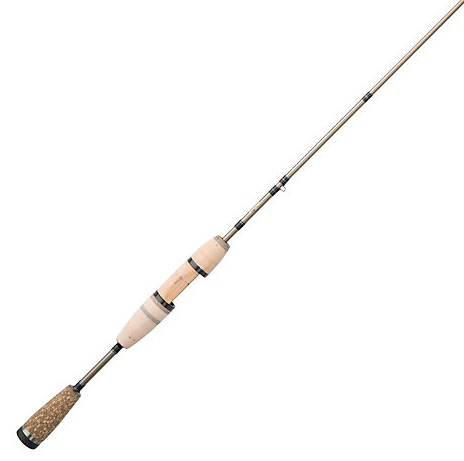
The Fenwick Elite Tech River Runner Spinning Rod comes with a hidden handle design which is very comfortable during use over extended periods of time. The rod is equipped with titanium frame guides which are very damage resistant and lightweight making them easy to use under a wide array of different conditions.
The handle on the rod is made out of TAC and cork which provides you with a solid grip for reeling in bluegill very easily. This material is also waterproof which ensures that you are able to maintain a tight grip even when the handle becomes wet. The actions on this reel were perfectly designed providing you with the ability to carry out lightweight and ultra-lightweight fishing tasks with ease.
#2 Cadence Spinning Rod CR5-30
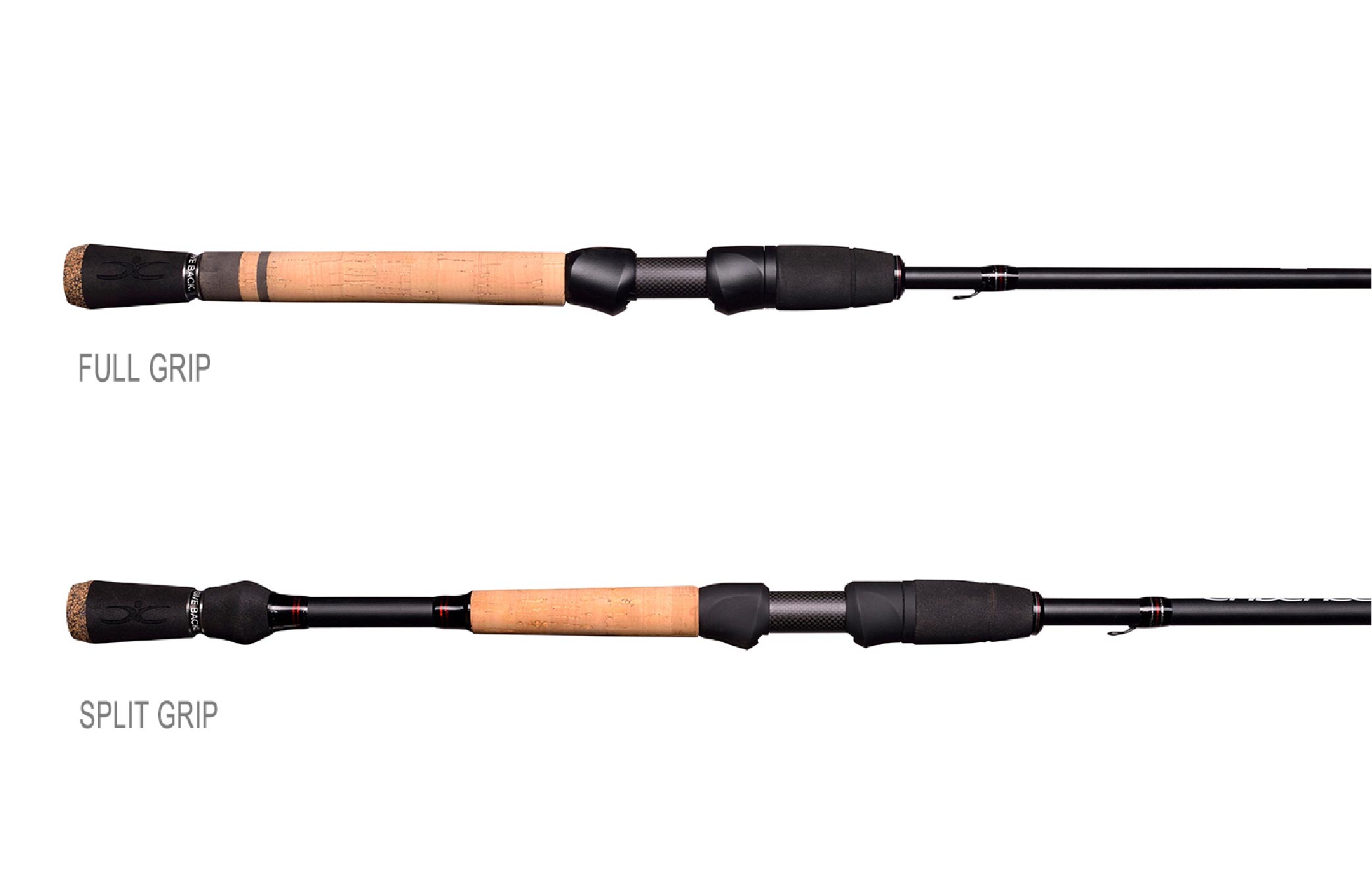
The Cadence Spinning Rod CR5-30 is made out of very durable and long-lasting 30-ton carbon fiber matrix graphite blank material that provides great sensitivity in addition to solidity which makes it perfect for all kinds of different fishing applications. The rod is outfitted with stainless steel guides that have SIC inserts which make the entire action of the rod a lot smoother and damage resistant.
This rod is also packing a 2-piece design which makes it very easy to transport and carry with you in a variety of different vehicles and storage containers. The rod was designed with sensitivity, weight, and durability in mind so it operates very smoothly and efficiently in all types of water. It’s lightweight and has a full reel seat with stainless steel framing for ultimate power and control.
#3 G.Loomis Classic Panfish Spinning Rod
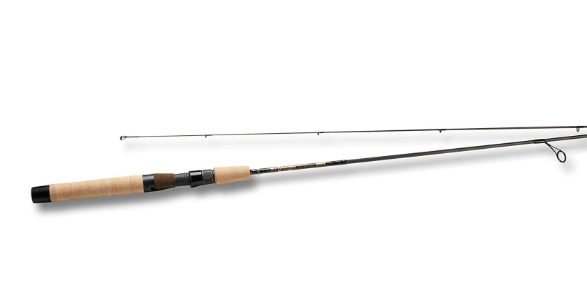
The G.Loomis Classic Panfish Spinning Rod comes equipped with a foam and cork grip configuration with gives you ultimate grip and control in a variety of different situations. The rod is packing a fiber blend blanket material which makes it extremely resistant to damage. This reel is also equipped with a fast tip which adds sensitivity and speed to the overall experience. The reel is outfitted with single foot aconite guides which add precision to your casting and reeling.
#4 Ugly Stik Elite Spinning Rod
The Ugly Stik Elite Spinning Rod is made out of graphite that is integrated with Ugly Tech construction design elements which make the rod super durable and damage-resistant. The rod also comes equipped with a cork handle that gives you a very comfortable and solid grip on whatever you may be hooking onto at the other end.
This rod is packing a one-piece stainless-steel guide system which increases the overall durability and precision of the rod. It’s rated for about 8-17 pounds but the great news is that it also has several other weight configurations for you to choose from.
#5 OKUMA Celilo Graphite Lightweight
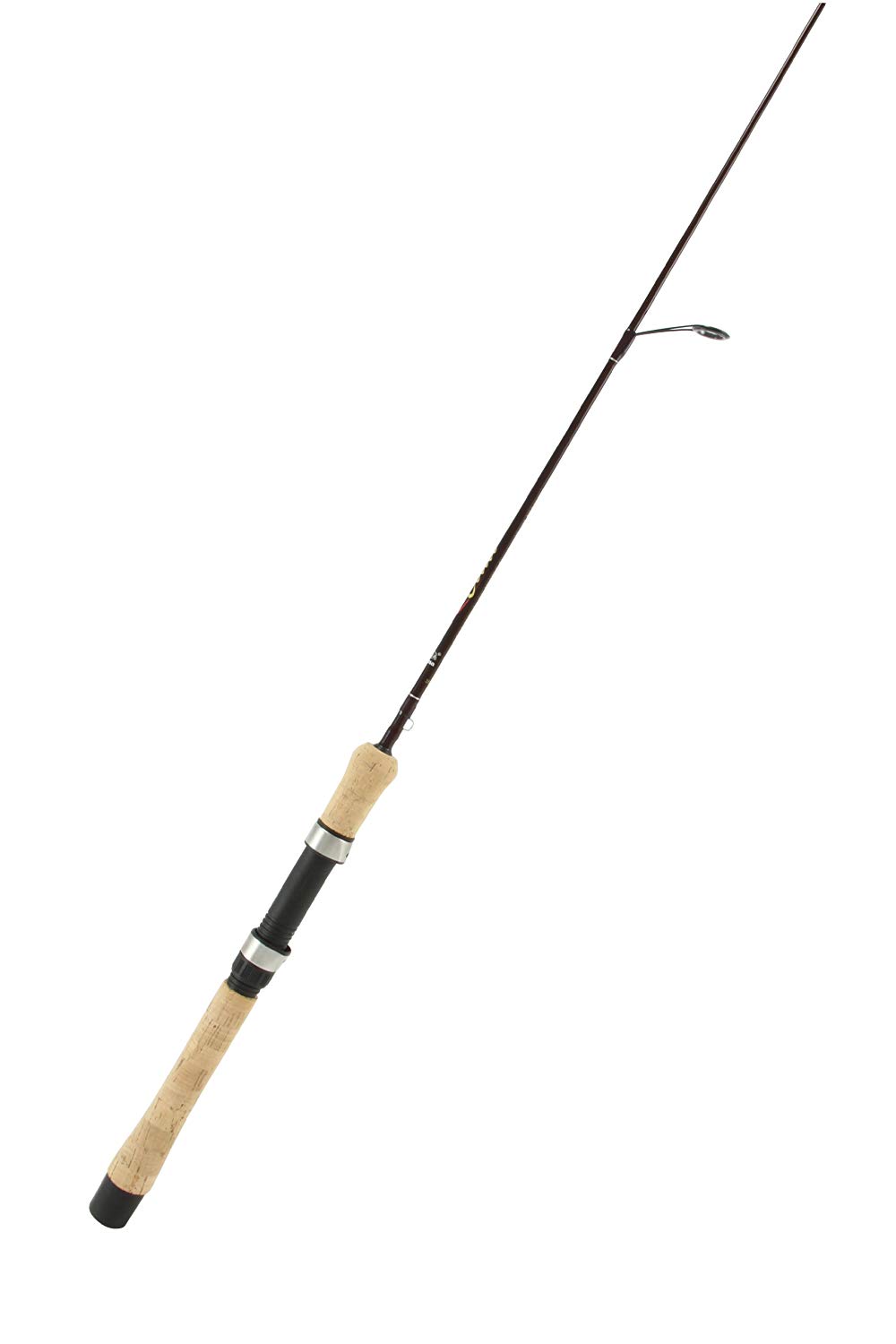
The OKUMA Celilo Graphite Lightweight is made from premium materials which make the rod highly damage resistant and long-lasting. It has a 2-piece design that measures about 6’6″ and has a sensitive graphite blank for the overall material body composition which provides the perfect balance of bit sensitivity with rod durability.
This rod comes with aluminum oxide guide inserts which makes it easy for you to control the reel once it’s been deployed inside of the water. The rod is made in the United States and also has gore and rear quality grade cork grips which ensure that you’re able to maintain a tight grip on your catch at all times. This rod is also outfitted with stainless steel hooded reel seats which provides smooth functionality throughout the entirety of the rod.
#6 LurEra Bass Fishing Spinning Rod
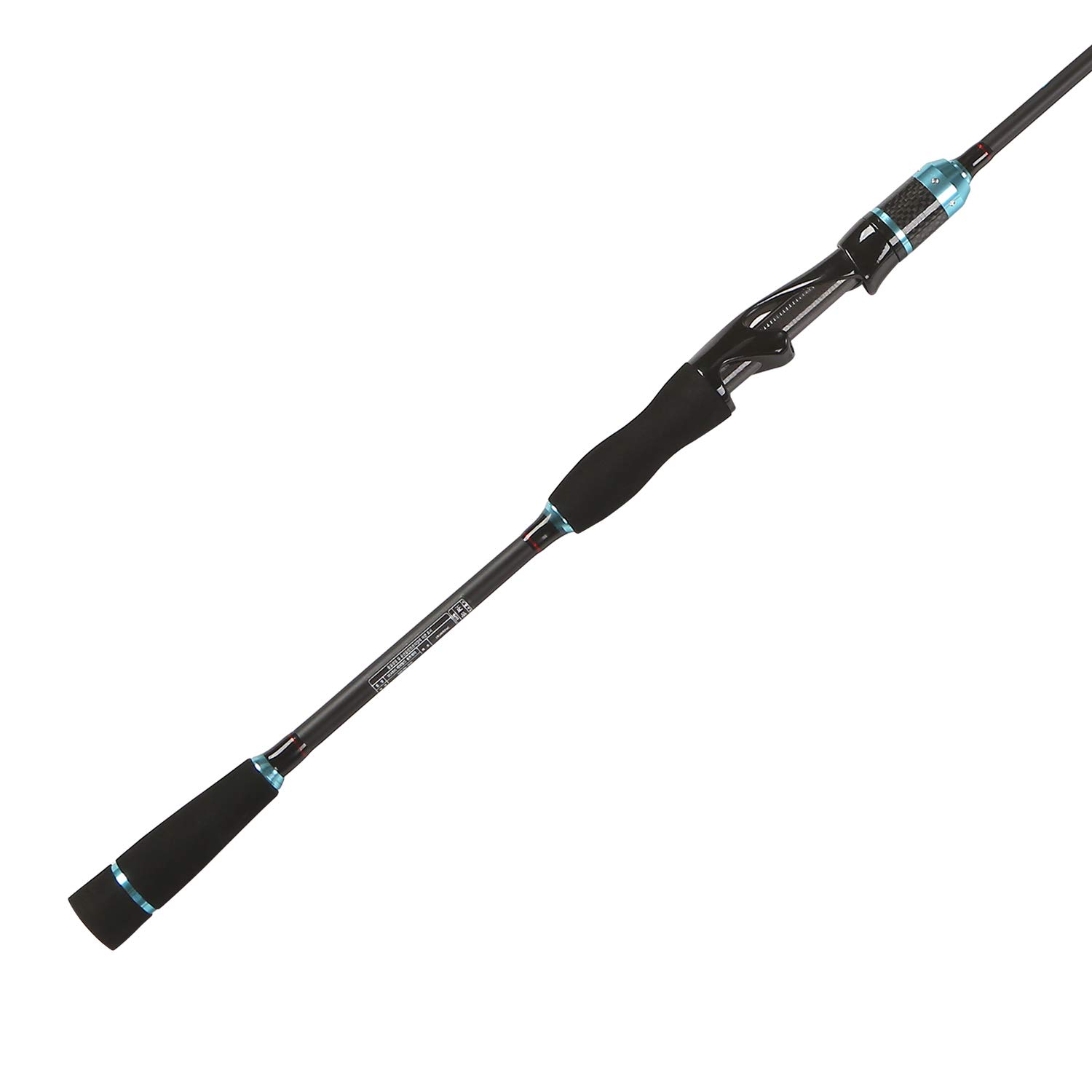
The LurEra Bass Fishing Spinning Rod is made out of precision machined 24-ton carbon fiber blank material which combines the perfect aspects of lightweight functionality and line sensitivity. The rod is equipped with premium O-ring guides which have ceramic inserts in them which reduced the amount of friction created during actioning which protecting the line from damage.
This reel comes with a high-density EVA handle that is both great to look at and very comfortable to use on long fishing expeditions or trips. The rod comes with a standard one-year warranty from the manufacturer which is great news if you happen to not like it once the purchase is complete. This reel is also outfitted with a reel seat that has a unique design that is also durable and lightweight.
Conclusion
We’ve covered all of the most important factors and information that you need to know as it relates to catching bluegill in any type of waters that you may be fishing. Before you go out on your next fishing trip, make sure that you take all of the tips and advice we’ve given you so that you can ensure you’re fully prepared to take them on head first. There are so many different aspects to bluegill fishing however the top priorities are the location and the type of bait you use.
As long as you can find the right location, you will probably find a lot of bluegill fish as long as you take the intricate advice, we went over earlier. Remember to take your time, have fun, and enjoy the experience when bluegill fishing to get the most out of your fishing trip!